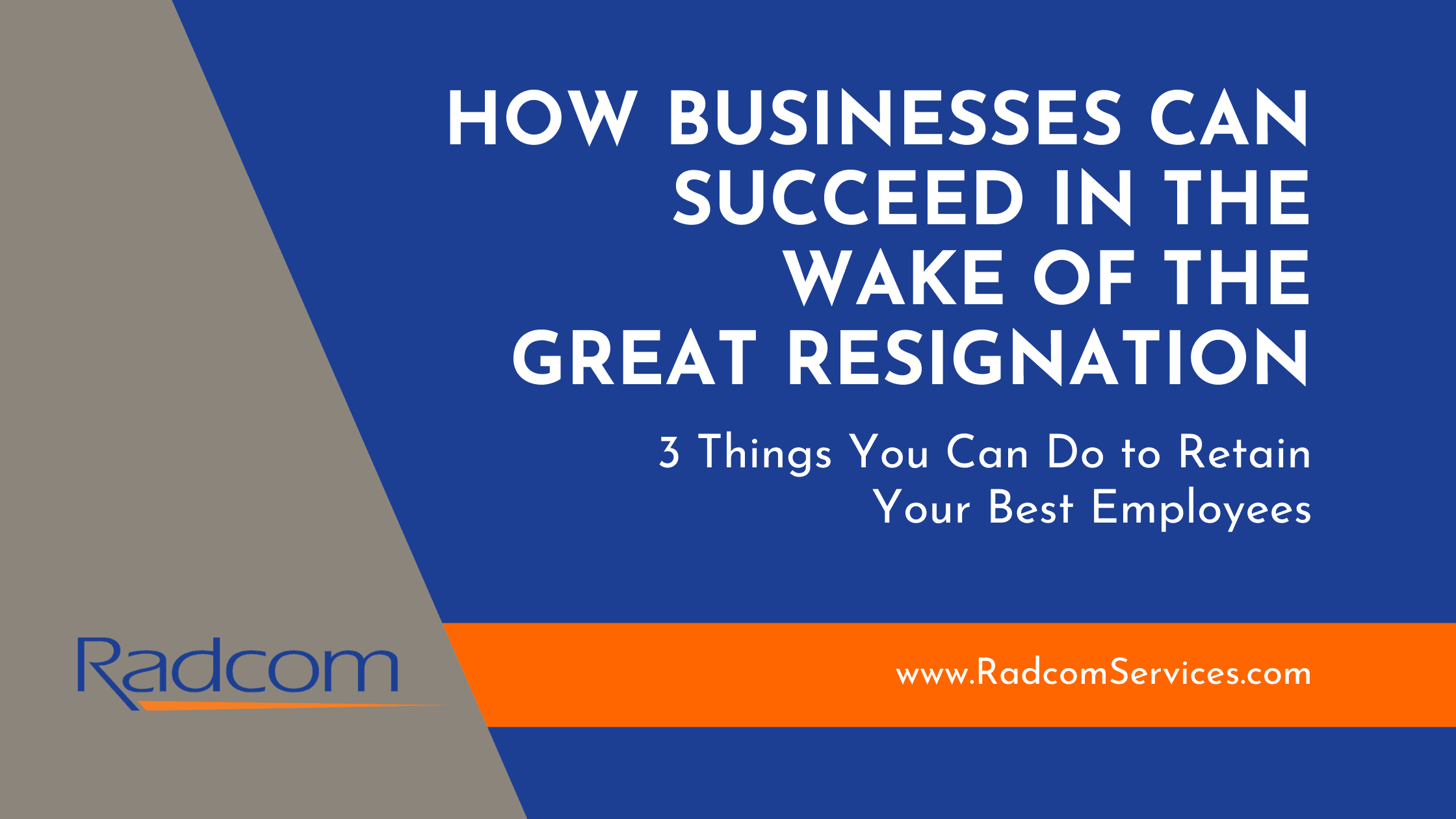
The “Great Resignation” is making an impact on businesses across the country and around the globe. It’s a phenomenon that describes record numbers of people leaving their jobs during the Covid-19 pandemic, often with no prospects lined up. In 2021, an average of nearly 4 million workers quit their jobs each month—the highest number ever recorded.

The Great Resignation’s Impact on Employers
Voluntary turnover has the potential to cost businesses billions of dollars, and that’s just the beginning of its effect. It can decrease productivity, increase burnout in employees who stick around, and destroy company culture. Retention is the obvious key to avoiding or minimizing these “costs,” and the best way to increase retention is to focus on addressing the needs of your employees.
3 Things You Can Do to Retain Your Best Employees
All good leaders know that it’s important to invest in employees who are (or have the potential to be) high performers. This involves understanding where they are now and where they want to be in the future. It involves defining the desired performance of their current roles and supporting the growth necessary to achieve their goals.
Here are three ways managers and leaders can retain good employees.
- Clarify career paths for your employees.
A recent LinkedIn Learning report found that 94% of employees would stay with their company longer if it invested in their careers. Often called “Career Pathing,” this process involves working with employees to lay out their potential trajectory within an organization by defining goals and identifying the skills and experience needed to achieve them. This helps employees know that their professional development is important to the company, which, in turn, leads to a higher retention rate.
What might this look like in your organization?
Your employees need to know what’s expected of them and see a clear path to their future within the organization. It’s best to start with defining the performance as outputs instead of their behaviors, so you ensure performance is based on the final work product rather than the variable actions involved in creating that product. Next, you need to create a job description for each role that includes the defined work output and the criteria that result in a high quality output. These job descriptions should also include the tasks required to complete the output and the skills and knowledge necessary to perform the task. Having each of these things in place provides a clear, actionable path for each individual employee to grow and succeed in the company.

- Help your employees build new skills.
Once a career path is defined and the skills to reach that path are identified, it’s time to help your employees build these new skills. “Upskilling” is a process that focuses on helping employees become more skilled and relevant at their current position within an organization. An indispensable practice to retain staff and reduce costs associated with replacing employees, upskilling is good for both employees and the business.
What might this look like in your organization?
We have found that creating a “guidebook” for each job role helps to lay out a roadmap for the desired performance. It is a useful training tool that sets expectations and includes “how” to produce the work output and to what standard. (The job description explains “what” the work output is.) This guidebook becomes a resource for both the employee and the manager.
- Coach for continuous improvement.
As a leader or manager, it is important to help coach your employees through their career path and specific upskilling processes. Continuous improvement is about finding better ways to do things, intentionally and over time. This focus on continuous improvement encourages constant employee engagement and allows them to see how they fit into the big picture success of the organization.
What might this look like in your organization?
Coaching to the output makes it less personal, allowing the manager to focus on the performance, not the person. The manager uses the job description and guidebook to set expectations and review performance. He or she can then work with the employee to offer support (and address other things that may influence performance) to produce the outputs in a way that exceeds expectations.
Your Organization Doesn’t Have to Be One of the Statistics
The Great Resignation has and will continue to have an impact on business as we know it. However, it doesn’t have to be detrimental to your organization.
By clarifying a path or paths to long-term success for your employees, helping them build the skills necessary to reach their goals, and supporting and coaching them along the way, you can succeed in the wake of the Great Resignation.
We Can Help.
Need help navigating the process? Talk with a performance improvement expert at Radcom. Give us a call at (330) 650-4777 or visit www.RadcomServices.com/performance-improvement.

